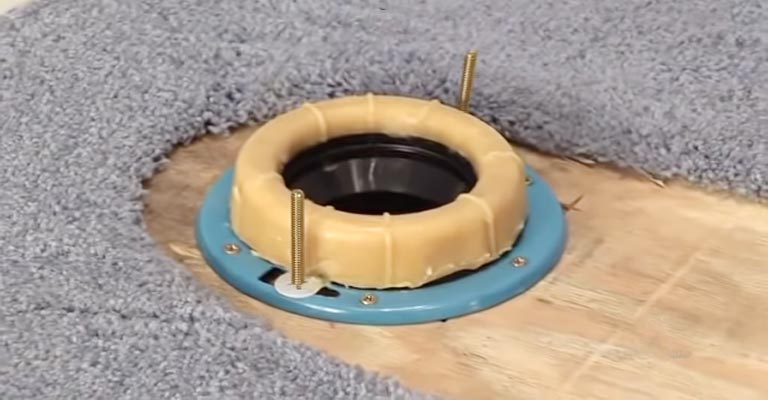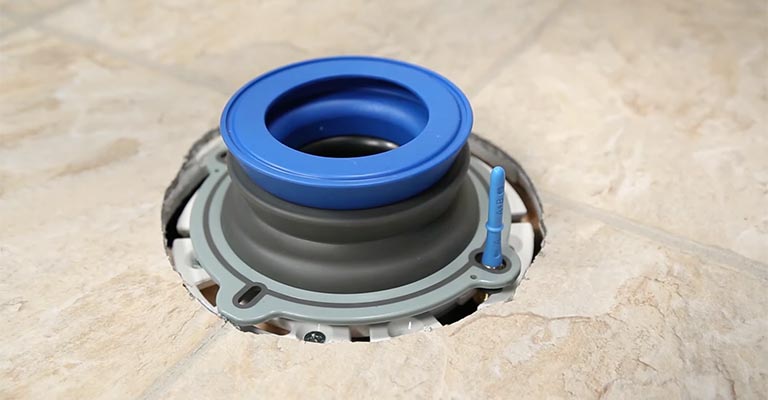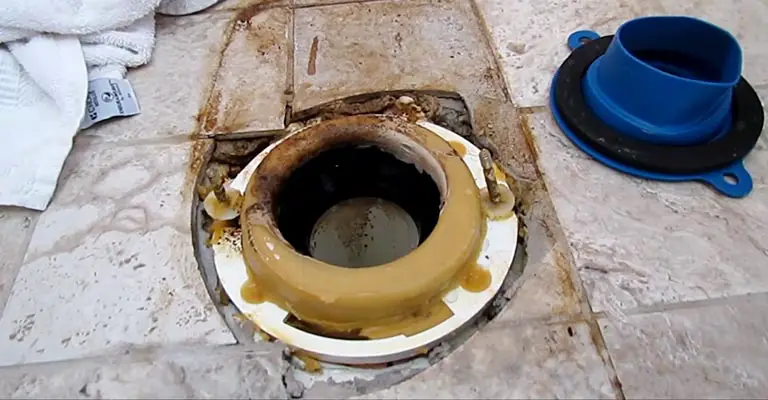Toilet wax rings, despite being a seemingly inconspicuous component of your bathroom plumbing, play a critical role in preventing leaks and maintaining a sanitary environment.
However, these humble wax rings can sometimes fail, leading to unpleasant and potentially costly consequences.
Understanding why toilet wax rings fail is essential for homeowners and DIY enthusiasts alike, as it enables proactive maintenance and helps prevent water damage and sanitation issues.
Homeowners who enjoy DIY projects around their homes will recognize the toilet wax ring as an essential part of their projects.
The seemingly simple plumbing component in your home plays an important role in keeping your bathroom floor clean by preventing everything you flush down the toilet from spilling!
In other words, it ensures that all waste water makes its way to the local sewage treatment plant. Your bathroom will also be free of nasty odors caused by sewer gas when your toilet’s wax ring is in place.
You can buy an inexpensive soft wax ring that attaches to the flange that sits on the floor next to the toilet and connects it to your waste line.
How Long Does A Toilet Wax Ring Last?

I would say indefinitely. Rubber deteriorates, whereas wax doesn’t. There is no chance that the toilet will spring a leak on its own unless there is another problem with it.
The wax rings are usually replaced when the toilet is removed for some unrelated reason. You should always replace the existing wax ring with a new one when you reinstall a toilet.
It is possible for wax rings to leak if they are improperly installed. This may have been caused by a thin ring that was used by the installer, or perhaps a flange that lifted the toilet off the floor and made it rock.
It won’t take long for water to start leaking through a compromised wax ring. Water can rot a subfloor in no time if it is left standing. Thus, the toilet rocks more and leaks more due to the resulting sponginess.
More On Wax Rings for Toilets
You can get spongy floors around your toilet if you keep them wet for a long period of time. After a while, the toilet will start to rock, mold will grow, and the bathroom will smell like sewage.
Why is this happening? It appears that the wax ring between the bottom of the toilet and the waste pipe in the floor has been damaged.
Around the toilet base, the wax ring acts as a gasket. This piece attaches to the waste line opening on the toilet flange.
The waxless rings available today are made of rubber or plastic polymers, but traditional wax rings remain popular because they’re relatively inexpensive and work well.
In some cases, wax rings contain a polyurethane additive and are made from vegetable-based waxes or petroleum-based waxes.
The product is usually packaged in a plastic container. Plastic attachments may be included to help seal the toilet waste pipe.
Wax rings usually fit waste openings of three to four inches. Plastic-reinforced wax rings are more expensive than standard ones, but they cost less than $5.
A wax ring typically measures 3/4-inches thick. Some are thicker than one inch. In addition to 40 percent more wax, oversize wax rings add an extra inch of width to reach flanges recessed beneath thick floor coverings.
Occasionally, even these aren’t thick enough to make a good seal. The solution is to add one or more flange extenders in such cases.
Using these plastic rings, the distance between the flange opening and the toilet is minimized by fitting them on the rim of the flange and installing them with screws.
Signs That Indicate a Failing Wax Ring
- Your toilet is surrounded by visible standing water
- Your toilet floor may have water damage or visible mold
- Your bathroom seems to have a stinky odor (especially near your toilet’s base)
- Your toilet floor has water stains on the ceiling
- Sitting on a wobbly toilet or one that rocks back and forth
Why Does The Wax Ring On My Toilet Keep Failing?

Whenever you see any of the above signs, you should replace your toilet’s wax ring on the side of caution. Knowing what causes problems with your wax ring can help prevent these issues from occurring.
A loose toilet is one of the most common causes of a wax ring to leak. As a result, you will need to replace your wax ring when you replace your toilet. A new one will be needed along with the new toilet.
Water seeping through the toilet, the floor, and the wax ring could also cause the wax ring to fail due to a backup in your main sewer line.
Additionally, a wax ring is not able to form a tight seal between the toilet flange and the tile floor in bathrooms with tile flooring.
This problem can easily be solved with a flange heightener, found at your local hardware store. It reduces the gap between the toilet and the flange so that a good seal can be achieved.
Types of Wax Rings

A very simple wax ring is the most basic option here. As long as it is installed correctly, it generally lasts ten years, is relatively inexpensive, and is fairly easy to install.
Getting a good seal requires setting the toilet perfectly on top of the ring on your first attempt. An incorrect placement could result in leaks in the future because of a faulty seal.
One type of wax ring has a sleeve, while the other has none. When you (or your plumbing professional) install and fit a wax ring with a sleeve, the wax ring is more durable and stable.
In general, wax-free rings tend to last longer than wax rings and are preferred by some homeowners and plumbers.
Furthermore, wax-free rings require less cleanup after installation. As long as it is properly placed and installed, this type of rubber ring provides an adequate seal.
How To Install a Toilet Wax Ring?
Installing a wax ring on a toilet can be done by you if you can replace the toilet by yourself. However, if the ring failed and the toilet leaked, you will probably need to repair other things first.
A repair ring may be needed to repair a cast-iron flange that has corroded due to water contact, or to replace a part of the subfloor damaged by water. Recessed flanges may also need extenders to raise their height.
When you have scraped off the old wax ring and thrown it away, you can install a new one. Others stick the wax ring to the bottom of the toilet around the waste opening, rather than placing it on the flange.
In most cases, it is best to place the wax ring on the flange, if the wax ring has plastic reinforcement. After that, place the toilet.
The next step is to compress the wax ring before bolting the toilet in place so it sits flush on the floor.
Is there an easy way to do this? You should sit on the toilet facing the tank and wobble around until you hit the floor. Next, connect the water supply to the toilet and tighten down the bolts.
Final Words
Investing a little time, money, and attention can prevent homeowners from having plumbing headaches in the future. A wax ring on your toilet is a prime example of this. It’s either now or later!








